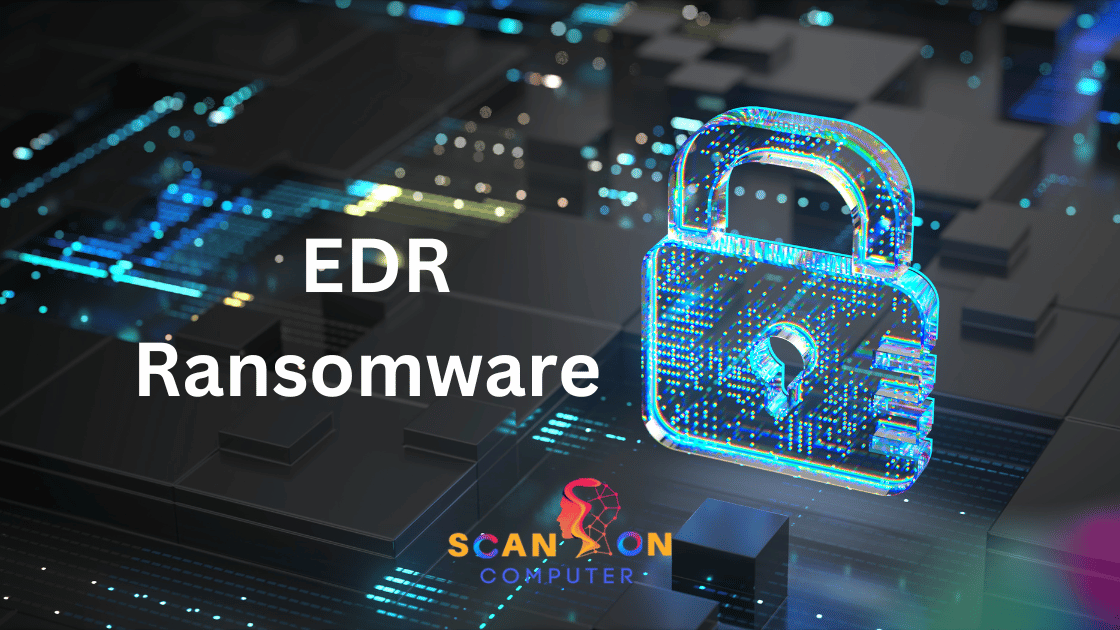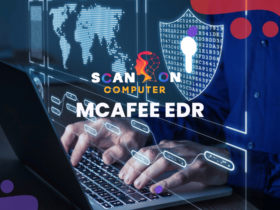EDR ransomware solutions continuously monitor activity across networked endpoints to detect any suspicious behaviour that requires investigation, alerting organizations to investigate. EDR tools often work in tandem with other security tools to provide comprehensive protection from advanced threats.
EDR ransomware solutions differ from signature-based antivirus solutions by employing telemetry to understand the behavior of unknown threats and neutralize them before they cause any damage.
What is EDR Ransomware?
Endpoint detection and response (EDR) is an integral component of an endpoint management strategy, helping organizations detect and respond to advanced threats and security incidents more quickly. EDR involves continuously monitoring endpoint security posture – such as computers, tablets, smartphones and servers – for suspicious activity or cyber attacks like ransomware attacks that target them directly.
EDR solutions collect and analyze endpoint-level data points such as system logs, event information, user behavior patterns, file changes or deletions and more to provide a holistic picture of an environment. EDR ransomware platforms connect to security infrastructure like Security Information and Event Management (SIEM) platforms and threat intelligence feeds in real time to provide real-time visibility into networks.
Check Point Harmony for Endpoint Protection is a leading EDR solution, featuring a managed, policy-driven approach that maximizes protection while having no negative effect on performance and offers rapid ransomware rollback even offline.
How does EDR Ransomware work?
Endpoint detection and response (EDR) is a security concept that monitors activity on all of your network’s end devices to identify cyber threats like malware or ransomware, helping your team swiftly investigate and respond to cyber incidents.
Antivirus software primarily relies on signature-based detection of known malware, while EDR ransomware solutions use behavior-based analytics to detect unknown cyberthreats. They often integrate with SIEM systems or threat intelligence services for enhanced capabilities.
Once a threat breaches the perimeter, an EDR solution will immediately recognize it and begin analyzing its behavior, such as looking for signs of ransomware. An alert will then be sent to organizations so they can review it and take appropriate measures such as blocking access, quarantining files or isolating devices from their network.
EDR ransomware solutions should include continuous file analysis that searches for subtle attacks. Xcitium’s lightweight agent utilizes run-time behavioral analysis against unknown files to quickly determine whether they are malicious or safe within minutes and with base event granularity granularity granulation; this enables it to detect threats before other security tools detect them, leading to zero impact on performance and minimal false positives.
How EDR ransomware Solution protect business?
EDR ransomware enable teams to stay two steps ahead of ransomware by monitoring endpoints 24/7 and employing machine learning technology to recognize normal network behavior and identify any suspicious activities, thus helping detect ransomware as well as advanced threats like phishing attacks or AI-powered attacks that traditional security tools don’t detect.
Modern EDR solutions also provide users with offline protection. While some platforms in the market require backend server connections for full protection, an effective EDR solution can still provide full coverage even without active internet connectivity – particularly useful for remote workers and those traveling for business regularly.
Ideal EDR solutions should include a robust prevention capability that lowers your attack surface while providing full-stack endpoint protection such as web, next-gen antivirus, and application hardening protection. Look for one with behavioral detection, which is more accurate than using static Indicators of Compromise/Indicators of Attack lists as cybercriminals are constantly adapting their techniques and tactics. Furthermore, an EDR should detect deviation from known-good applications to minimize false positives that might distract you from dealing with actual security incidents, including ransomware infections.
Endpoint Security VS EDR Ransomware
EDR differs from traditional antivirus software in that it detects modern threats such as fileless malware and ransomware without using signature detection alone, and also provides visibility into endpoints so they cannot serve as entryways for cybercriminals.
An EDR ransomware solution uses machine learning and behavioral analysis to detect patterns that deviate from normal behavior, flagging them for security teams to review them. Once identified, EDR solutions may respond by quarantining malicious files or isolating an infected endpoint.
EDR ransomware provide valuable assistance by quickly isolating an attack, stopping its progress, reversing changes made, deleting files and recovering systems back to their normal states – thus providing valuable protection against advanced ransomware attacks while decreasing downtime risk.
Role of EDR in Preventing Ransomware Attacks
EDR (Endpoint Detection & Response) is an essential element of any comprehensive cybersecurity strategy. Designed to detect, investigate and respond swiftly to security incidents – such as ransomware attacks – EDR provides rapid identification, investigation and response so as to limit damages on networks from these incidents before they escalate and spread further.
EDR technology relies on behavioral learning and analysis. Cybercriminals frequently alter their tactics, techniques, and procedures during an attack, making it hard to detect them before they have an opportunity to encrypt your data or gain entry to your network. EDR can distinguish abnormal threats from regular endpoint behaviors so as to pause an attack and prevent ransomware encryption, file deletion, or even exploits from taking place.
Look for an EDR solution that provides a standardized method of reporting attacks so you can identify which ransomware threats have affected your network, what applications and data have been affected, as well as how it entered. This information is essential in mitigating future attacks as well as understanding why previous ones got past your defenses.
1. An Improved Knowledge of the Attacks
As part of a ransomware attack, threat actors will first examine your IT infrastructure for vulnerabilities before using an exploit kit to breach your security and gain entry to your network. From here they can steal or encrypt files before demanding ransom payments for them.
Traditional anti-virus and firewall tools fall short in their ability to combat most threats due to limited visibility of endpoints, thus the need for EDR – to collect endpoint telemetry in order to detect anomalous activity on endpoints.
EDR solutions allow teams to capture the complete story of any threat, from its inception to conclusion. Furthermore, they offer insights that maximize team resources and allow for quick responses when threats arise.
ThreatDown’s EDR solution quickly detects and remediates infections, such as polymorphic malware or memory executables that other vendors overlook. It can track processes, kill processes, quarantine files, remove persistence mechanisms and isolate machines all with one click – our patented linking engine tracks every artifact, change or process alteration that other vendors miss to permanently eliminate malware from your endpoints.
2. Identifying Early Warning Signs of Ransomware
Most people assume ransomware attacks occur “out of nowhere”, but there are warning signs an attack is in progress. Most ransomware infections start when employees click on links or attachments in malicious emails which download and execute malware – usually ransomware – which then encrypts data or displays ransom messages.
Hackers typically test your network perimeter defenses by conducting smaller-scale attacks or simulations, seemingly minor and inconsequential at first, in order to gain hours’ of practice for a larger, more damaging assault. Monitoring these one-off incidents as potential precursors could alert you of ransomware infection in its early stages.
Your network monitoring tools should ideally be able to detect early warning signs of ransomware attacks, including disk activity spikes as the malware searches each folder for files to encrypt. Such activities may be detected by security tools that combine machine learning-based static analysis of binary files with threat intelligence data to recognize ransomware patterns.
3. Offline Ransomware Protection
Modern EDR ransomware solutions offer comprehensive protection against ransomware and data extortion threats. Pre-download detection, machine-learning-based static analysis and pre-execution prevention help block malicious code before it runs; furthermore these tools can prevent lateral movement, prohibit the use of privileged accounts for attacks and isolate infected systems from networks.
Strong security culture with education on how to secure credentials and avoid clickbait links can significantly lessen the impact of ransomware attacks. Employees should be encouraged to verify email senders and domains as well as learn to identify phishing emails; collaboration apps with advanced anti-phishing capabilities should also be set up for best results.
Organizations should take immediate steps if their systems or files become infected with ransomware, isolating them from the network and taking them offline in order to give themselves time to clean the systems or restore a backup before any permanent damage has been done. External storage that can be disconnected from the network is ideal, or using Write-Once-Read-Many storage which stores read-only objects that cannot be modified (known as WORRM storage). When mitigation actions cannot be implemented effectively or are impossible, seeking advice from federal law enforcement can help locate stolen information as well as apprehend criminal perpetrators of ransomware attacks.
Best EDR Ransomware Prevention Strategies
Ransomware attacks have become more sophisticated. Advanced Endpoint Detection and Response (EDR) tools can help protect against these threats by providing visibility into network traffic and filesystem usage, and blocking malware before it downloads and executes.
Limiting write access to user directories, disabling execution permission for programs stored within these folders and whitelisting applications can provide significant protection from certain strains of ransomware. Another key preventative practice involves isolating critical systems and data according to their business value.
1. Back up your files
An effective backup and recovery strategy is key to protecting against EDR ransomware. Make sure that all backups are stored safely, with regular tests performed to verify they can restore data without issue.
For optimal ransomware prevention, an EDR solution that includes multi-vector Endpoint Protection (EP) should be employed. EP can reduce initial compromise and further lateral movement by blocking untrusted files, processes, and registry keys from running on your systems. Furthermore, an EDR with both prevention and forensics capabilities would be best.
An effective EDR software relies on an extensive threat data set to thwart ransomware by intercepting it before it executes. Artificial intelligence-powered solutions offer additional protection, learning from new threats as they arise and adapting accordingly. By recognizing ransomware attack patterns, EDR software can detect ransomware before entering networks – potentially saving victims the cost of paying a ransom!
2. Educate your employees
Additionally to backing up data regularly, it is crucial that employees understand ransomware threats and have a response plan ready in case of an attack.
EDR tools can provide an important way of protecting against ransomware attacks. By monitoring anomalous behaviors and alerting users when suspicious activity is discovered, EDR tools can isolate infected systems to limit further spread of ransomware across networks.
Cybercriminals frequently exploit vulnerabilities in outdated software to launch ransomware attacks, making regular software updates vital in protecting yourself against these exploits. Furthermore, patches should be prioritized for software that manages sensitive information.
Keep your antivirus and firewalls updated, implement EDR tools and implement network segmentation to lower the risk of ransomware attacks and give security teams more time to isolate and eliminate threats if one does occur.
3. Use an EDR ransomware solution
An EDR ransomware solution, such as EDR software, can provide crucial protection from ransomware attacks. While traditional antivirus software only detects known threats, EDR solutions can detect unknown attacks and take preventative steps against them.
For maximum protection from ransomware infections, choose an EDR solution equipped with sandboxing and dynamic behavior analysis capabilities that can identify abnormalities on your network. This will enable your team to detect suspicious files without jeopardizing production environments.
Search for an EDR that features a search engine to quickly scan compromised environments and quickly discover any ransomware attacks. This feature will save time and allow security teams to quickly spot ransomware attacks.
When selecting an EDR, ensure it provides comprehensive threat detection with features such as full-stack endpoint protection (EP), application hardening and other “first-layer” defenses to lower the attack surface. This will ensure that even if an attacker manages to breach your traditional defenses and make its way onto other systems within your network, lateral movement won’t spread easily across it and affect more systems.
4. Reduce vulnerabilities
For EDR ransomware protection, it’s critical that vulnerabilities can’t be exploited by attackers. One way of doing this is implementing zero trust architecture (ZTA) with fine granular access control enforcement so only necessary information reaches those who require it.
Finally, training employees regularly on how to detect suspicious activities and phishing attempts is also key for keeping up with cyber threats and quickly detecting ransomware incidents – thus helping reduce their impact and duration.
To enhance detection and response capabilities, invest in an EDR solution equipped with forensics, threat context, advanced EP capabilities and quick containment features. Such software will allow you to evaluate compromised environments quickly while stopping malware such as ransomware from spreading. One such EDR product that comes highly recommended is XcitiumEDR’s robust search engine which allows security experts to investigate incidents quickly.
5. Restrict unwarranted access
EDR ransomware prevention best practices focus on stopping threats from breaching your environment in the first place, rather than reacting afterward. To do this effectively, your EDR must detect anomalous behavior – look for one with broad visibility combined with advanced threat detection techniques; machine learning capabilities should also be present and independently tested such as MITRE ATT&CK Evaluation to ensure comprehensive coverage and accuracy in attack detection.
EDR solutions monitor endpoints continuously to gather a variety of data – such as process creation, driver loading, registry changes, disk accesses and network connections. Next, built-in threat intelligence detects indicators of Compromise (IOCs) and attacks (IoAs), so as to automatically identify, isolate and neutralize them when they arise – just like a plane’s black box would record data points to help investigators determine the cause.
Conclusion
An effective EDR platform enables security teams to identify early warning signs of attacks. They also use it for threat hunting on endpoint devices and detect anomalous or suspicious activity on them. Furthermore, robust EDR solutions contain threats through monitoring and segmentation preventing further spread lateral movement of threats.
Security awareness training can also assist organizations in avoiding ransomware by reducing vulnerabilities through patching and other mitigation strategies, and by restricting unauthorized access to sensitive data and applications. As such, this can help safeguard sensitive business data and limit costly downtime caused by ransomware attacks. EDR ransomware solutions that offer ransomware rollback functionality may offer additional benefits, allowing organizations to restore files and data encrypted by ransomware to their pre-ransomware state. For optimal ransomware protection, look for an EDR solution that includes both native ransomware detection and full-stack Endpoint Protection (EP). EP helps minimize attack surfaces while acting as a first line of defense against cybercriminals and known bad threats.













Leave a Reply
View Comments